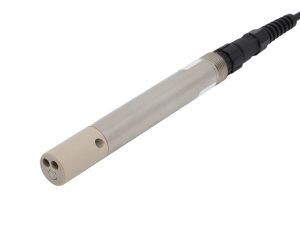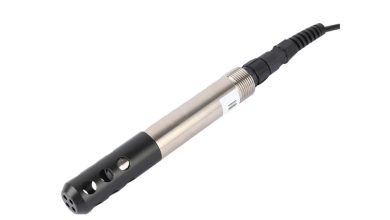How a Water Conductivity Meter Can Improve Water Quality Monitoring

Table of Contents
ToggleWater is a fundamental resource that sustains life, agriculture, and industrial processes across the globe. Ensuring the quality of water is critical not only for human consumption but also for maintaining aquatic ecosystems, agriculture, and a host of industrial processes. One of the most important parameters to monitor when assessing water quality is conductivity. Conductivity refers to the water’s ability to conduct electricity, which is directly influenced by the presence of dissolved ions such as salts, minerals, and other chemicals. A Water conductivity meter is an essential tool in this process, providing real-time, reliable data that can help prevent contamination, optimize water usage, and maintain the health of ecosystems.
In this blog, we’ll explore how water conductivity meters work, why they are important for water quality monitoring, and the specific ways they can improve water quality assessments across different applications.
What is Water Conductivity?
Water conductivity is the measure of how well water can conduct an electrical current. Pure water, like distilled water, has very low conductivity, because it has a minimal number of dissolved ions. However, when substances such as salts, minerals, and chemicals dissolve in the water, they break into charged particles, increasing the water’s conductivity.
The higher the concentration of these dissolved ions, the greater the water’s conductivity. In practical terms, water conductivity meters can tell you how much dissolved material is in the water, which can indicate the level of contaminants, nutrients, and other important substances. Conductivity readings are often used as an indirect indicator of water quality, with high conductivity levels signaling potential pollution or contamination and low conductivity indicating very pure water.
How Does a Water Conductivity Meter Work?
A water conductivity meter typically consists of two electrodes that are placed in the water. These electrodes pass a small electric current through the water, and the meter measures how much current flows between the electrodes. The amount of current that flows depends on how many charged particles (ions) are present in the water.
The meter then converts this data into a conductivity reading, usually expressed in microsiemens per centimeter (µS/cm) or millisiemens per centimeter (mS/cm). Some modern meters are equipped with automatic temperature compensation (ATC) to account for the fact that temperature changes can affect conductivity readings. In colder water, conductivity tends to decrease, while warmer water may show higher conductivity due to increased ion mobility.
Why Is Monitoring Water Conductivity Important?
Monitoring water conductivity is essential for maintaining the quality of water in various contexts. Some of the key reasons why conductivity is an important parameter include:
-
Detecting Pollution and Contamination: High conductivity levels can indicate the presence of pollutants, such as chemicals, fertilizers, or industrial waste, in the water. In freshwater bodies, elevated conductivity can also suggest the intrusion of saltwater, a phenomenon that can have harmful effects on freshwater ecosystems.
-
Water Quality in Drinking Water Systems: Drinking water must meet stringent quality standards to ensure public health. High conductivity levels can point to the presence of excessive minerals or pollutants, such as heavy metals or toxic chemicals, that need to be removed before the water can be deemed safe for consumption.
-
Aquatic Life Health: Aquatic organisms are highly sensitive to changes in water quality, including conductivity. If water conductivity levels deviate too far from normal ranges, it can harm aquatic life. For example, freshwater fish species cannot thrive in saline conditions, and high conductivity could indicate conditions that might harm their health or lead to the depletion of oxygen in the water.
-
Agriculture and Irrigation: For agricultural purposes, water conductivity helps in assessing whether irrigation water has the appropriate salinity levels for crops. High conductivity in irrigation water can damage soil quality and reduce crop yields by increasing salt levels in the soil, which affects plant growth.
-
Industrial Water Use: In industrial processes, especially in power plants or manufacturing facilities, water is used in cooling systems or as a solvent in chemical processes. If water conductivity is not monitored, it can lead to scaling or corrosion in equipment, reduced efficiency, and potentially costly downtime.
How Water Conductivity Meters Improve Water Quality Monitoring
Now that we understand the significance of conductivity and why it’s essential to monitor it, let’s explore how a water conductivity meter can directly improve water quality monitoring efforts in various settings.
1. Real-Time Monitoring and Immediate Action
Water conductivity meters provide real-time data, which is crucial in maintaining water quality. Unlike traditional lab testing, which can take days to yield results, a conductivity meter gives immediate feedback on the water’s condition. This instant data allows stakeholders—from environmental scientists to water treatment operators—to make quick, informed decisions when water quality issues arise.
For example, in a water treatment plant, an increase in conductivity could signal the presence of unfiltered pollutants, allowing operators to take immediate action, such as adjusting treatment chemicals or flushing out the system. Similarly, in an industrial setting, the real-time data can help monitor the water quality used in cooling systems to ensure that corrosion or scaling does not occur.
2. Ease of Use and Portability
Water conductivity meters are often portable and easy to use. This feature makes them ideal for fieldwork, such as testing water quality in rivers, lakes, and ponds, or monitoring water in agricultural settings like irrigation canals. Whether used by environmental agencies, farmers, or research scientists, the portability of these meters allows for consistent, frequent testing and provides valuable data for tracking water quality changes over time.
Because they are user-friendly, most water conductivity meters require minimal training and can be operated by individuals without a specialized background in water quality testing. Many models are handheld and come with digital displays, simplifying the process of monitoring conductivity in both professional and educational environments.
3. Improved Water Quality Assessment and Preventative Measures
By continuously monitoring water conductivity, it is possible to identify potential problems before they escalate. For instance, in aquaculture, fish farmers can use conductivity meters to ensure that the salinity of the water remains within acceptable levels. If the meter shows a sudden increase in conductivity, it could indicate that saltwater is intruding into the water source, potentially affecting the fish population. In such a case, farmers can adjust the water conditions quickly, preventing any harm to the aquatic life.
In agriculture, farmers can monitor irrigation water to avoid high salinity, which can damage crops and reduce soil fertility. If conductivity readings are too high, corrective measures such as diluting the water with freshwater or finding alternative water sources can be implemented.
4. Cost-Effectiveness and Environmental Protection
Regularly using water conductivity meters can help detect contaminants and impurities early, potentially saving money in long-term water treatment costs. For example, in industrial cooling systems, maintaining water quality through conductivity monitoring can reduce the risk of scaling and corrosion, preventing costly equipment damage and repairs.
Furthermore, conducting regular water quality monitoring helps avoid environmental damage. By detecting pollution early on, regulatory bodies and industries can take immediate actions to prevent hazardous substances from contaminating large water bodies or ecosystems.
5. Supporting Regulatory Compliance
Many countries and regions have strict regulations concerning water quality, particularly for drinking water, wastewater discharge, and industrial effluent. Conductivity meters can help organizations and facilities stay in compliance with these regulations by providing continuous data that supports regulatory reporting requirements. Whether it’s ensuring the safety of drinking water or maintaining discharge limits for wastewater, conductivity measurements are a key part of maintaining standards and avoiding penalties.
6. Data Logging and Long-Term Analysis
Modern water conductivity meters come with data logging capabilities, allowing users to collect, store, and analyze historical data. This feature is especially useful for tracking water quality trends over time, identifying patterns, and making predictions about future water conditions. For example, environmental researchers can use data logs to track how conductivity levels change during different seasons, helping them understand how weather patterns and human activity impact water quality.
Data logging also allows users to compare water quality measurements across multiple sites or across different time periods, providing valuable insights that can guide future water management strategies.
Conclusion
Water conductivity meters are indispensable tools for improving water quality monitoring in a variety of settings. Whether used in environmental research, water treatment plants, agriculture, or industrial applications, conductivity meters provide real-time, reliable data that can detect pollutants, optimize water usage, and ensure compliance with safety standards. By incorporating regular conductivity measurements, organizations and stakeholders can take proactive measures to maintain clean water, protect ecosystems, and reduce costs, ultimately contributing to a more sustainable future.
As water becomes an increasingly valuable resource in the face of climate change and growing populations, Water conductivity meter will continue to play a crucial role in safeguarding our most vital asset.



